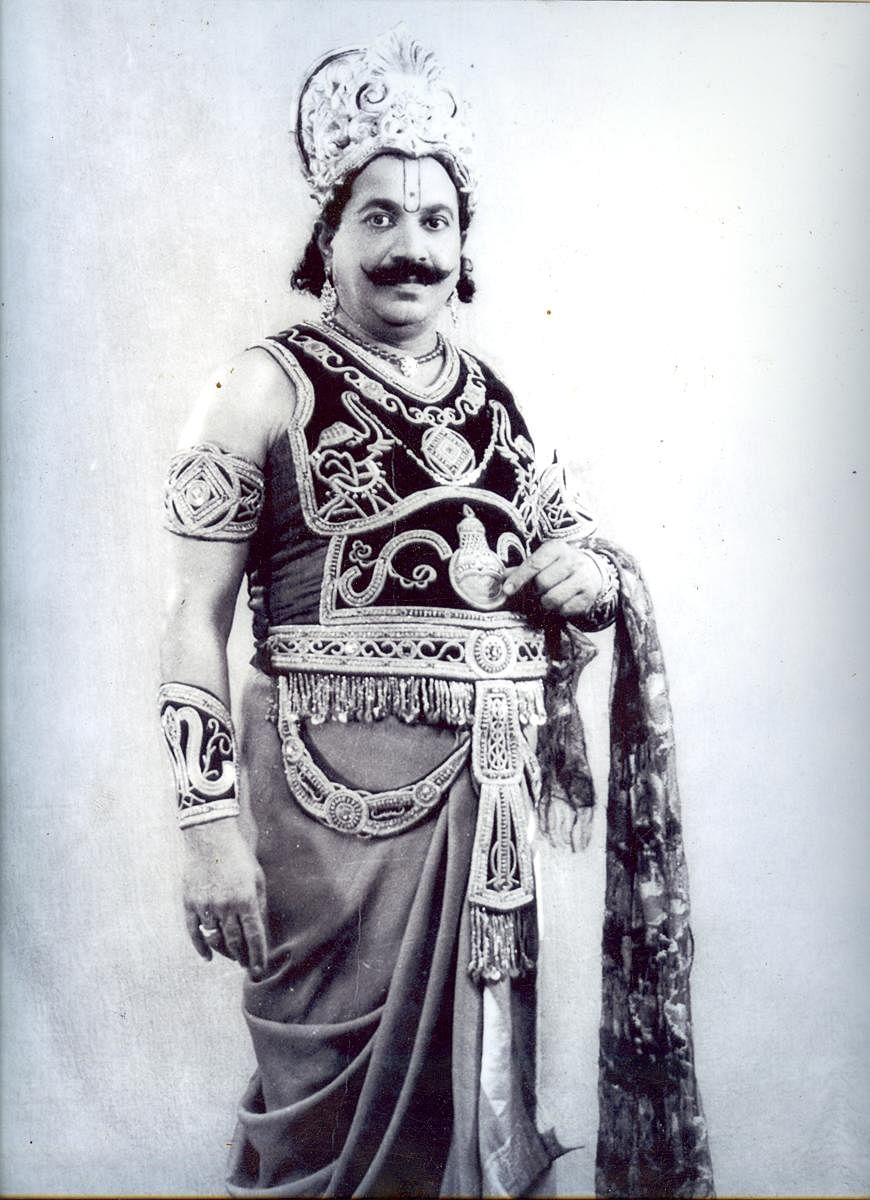
March 3 is a big day for Kannada cinema. It was on this day in 1934 that Sati Sulochana, the first Kannada talkie, was released. That makes Kannada cinema exactly 85 years old.
Although much lore about the film is heard to this day, archivists haven’t been able to lay their hands on a print.
The release of the film was widely publicised generated much curiosity in the city.
The 173-minute film, based on a story from the Ramayana, had 30 songs and ran full house in Bengaluru for six weeks.
Hundreds of families from towns and villages near Bengaluru came on bullock-carts to see the film, carrying food and water.
Sati Sulochana was a modest hit for Marwari businessman Shah Chamanlal Dungaji, its producer.
N S Sreedhara Murthy, who has written extensively about Kannada cinema and its music, received a huge collection of articles, posters, photographs, newspaper reports, and brochures from writer Dr Vijaya Subbaraj.
Vijaya is the daughter of Seetharam, who used to work for the production house South India Movietone. The material told him a lot about the early days of Kannada cinema.
Bengaluru had quite a few cinema halls then, and they only screened silent films made abroad. A ‘voice box’ was required to screen talkie films.
Sati Sulochana was released only in Bengaluru. The producer did not make any other film after that, Sreedhara Murthy told Metrolife.
“But the cast and crew, including music director-actor R Nagendra Rao and director Y V Rao, made their careers in films. Subbaiah Naidu, hero of the film, had already a big name in Kannada company drama.
He went to back to the stage and returned to films in 1941 with ‘Vasantha Sena,’ based on Sanskrit play Mricchakatika.
Sreedhara Murthy, now working on a book on Sati Sulochana.
It was 13,290 feet long and shot at Chatrapati Studios in Kolhapur. Producer Dungaji had contributed Rs 25,000 while Subbaiah Naidu and Nagendra Rao had together spent Rs 15,000. Bellave Narahari Shastry was paid Rs 150 as his fee.
The films war scenes were shot at the Kolhapur car festival. The entire film was shot over two months.
A review of the film appeared in Vishwa Karnataka, popular Kannada newspaper of the time, in its March 4, 1934, issue. The reviewer saw the film on the day of release, and wrote a review for the next day’s edition.
“There are several touching scenes in the film, like the one showing Sita’s plight at Ashoka Vana. The audience can feel the pain when Sulochana enters the fire with the head of her husband Indrajit.
Those who have seen English films may not be overwhelmed by these scenes though…. This is a maiden effort.
The story is from the Ramayana. Its language is our mother tongue Kannada.
There will be flaws. But they will go away as our experience matures,” the reviewer wrote.
The film’s cast included Thripuramba as Sulochana, Lakshmi Bai as Mandodari, Y V Rao as Lakshmana, C V Seshachalam as Narada, D A Murthy Rao as Rama and S K Padmadevi as Sakhi.
Produced for Rs 40,000
Sati Sulochana was made at a cost Rs 40,000. Well-known Kannada writer Bellave Narahari Shastry wrote the story and lyrics, and got Rs 150 for it. The ‘thrilling’ action scenes included Hanuman carrying the mountain Sanjeevini, ‘the great war’, ‘the creation of Mayarath’ and the ‘presentation of Mayasita’
200 films a year
Since Sati Sulochana, Kannada films have come a long way. About 200 films are now produced in Kannada every year. The industry has stood its ground and owes much to Sati Sulochana, which paved the way.